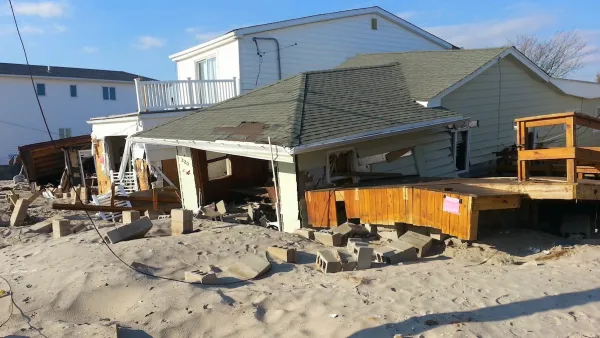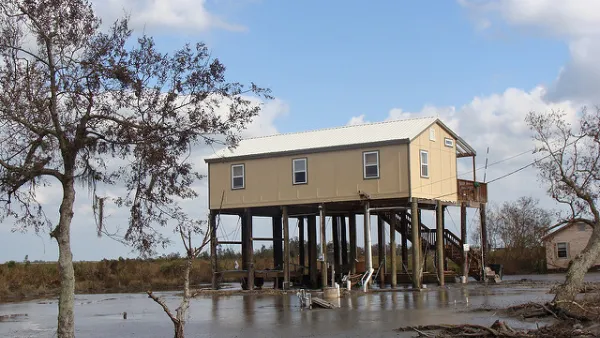A new analysis of the relocation patterns of households that participate in FEMA’s flood buyout program reveals a pattern of increased racial segregation.

New research into what happens to homeowners who participate in the Federal Emergency Management Agency (FEMA) buyout program for flood-prone properties indicates that the program, while it encourages managed retreat in the face of rising sea levels and increased flood risks, “program outcomes look very different depending on the racial makeup of a given neighborhood.”
“The first difference is in who takes buyouts in the first place,” Jake Bittle explains in Grist. “The average majority-white buyout area had an almost 90 percent chance of flooding by 2050, compared to as low as around 50 percent for majority-Black buyout areas. This suggests that white households only participate in the program when the flood risk around them is severe, and otherwise tend to stay put.” This could be due in part to better investment in flood mitigation infrastructure in richer areas or a better chance of selling homes through the private market rather than opting for a FEMA buyout.
Another finding reveals that households from white-majority neighborhoods are more likely to move to other white-majority areas after a buyout. Jim Elliott, lead author of the study, “believes the data shows white families in all neighborhoods using buyout money to move to wealthier and whiter areas.”
The study concludes that “FEMA money seems to grease the wheels of pre-existing processes of white flight and urban segregation, allowing white households to leave behind diversifying neighborhoods and entrench themselves in other white suburbs and towns.”
Elliott suggests the buyout program should provide additional support for low-income households so they can access a wider variety of housing in their new neighborhoods and keep a more detailed record of how the program affects participating households.
FULL STORY: FEMA’s buyout program reduces flood risk. But does it deepen segregation?

Analysis: Cybertruck Fatality Rate Far Exceeds That of Ford Pinto
The Tesla Cybertruck was recalled seven times last year.

National Parks Layoffs Will Cause Communities to Lose Billions
Thousands of essential park workers were laid off this week, just before the busy spring break season.

Retro-silient?: America’s First “Eco-burb,” The Woodlands Turns 50
A master-planned community north of Houston offers lessons on green infrastructure and resilient design, but falls short of its founder’s lofty affordability and walkability goals.

Test News Post 1
This is a summary

Analysis: Cybertruck Fatality Rate Far Exceeds That of Ford Pinto
The Tesla Cybertruck was recalled seven times last year.

Test News Headline 46
Test for the image on the front page.
Urban Design for Planners 1: Software Tools
This six-course series explores essential urban design concepts using open source software and equips planners with the tools they need to participate fully in the urban design process.
Planning for Universal Design
Learn the tools for implementing Universal Design in planning regulations.
EMC Planning Group, Inc.
Planetizen
Planetizen
Mpact (formerly Rail~Volution)
Great Falls Development Authority, Inc.
HUDs Office of Policy Development and Research
NYU Wagner Graduate School of Public Service




























